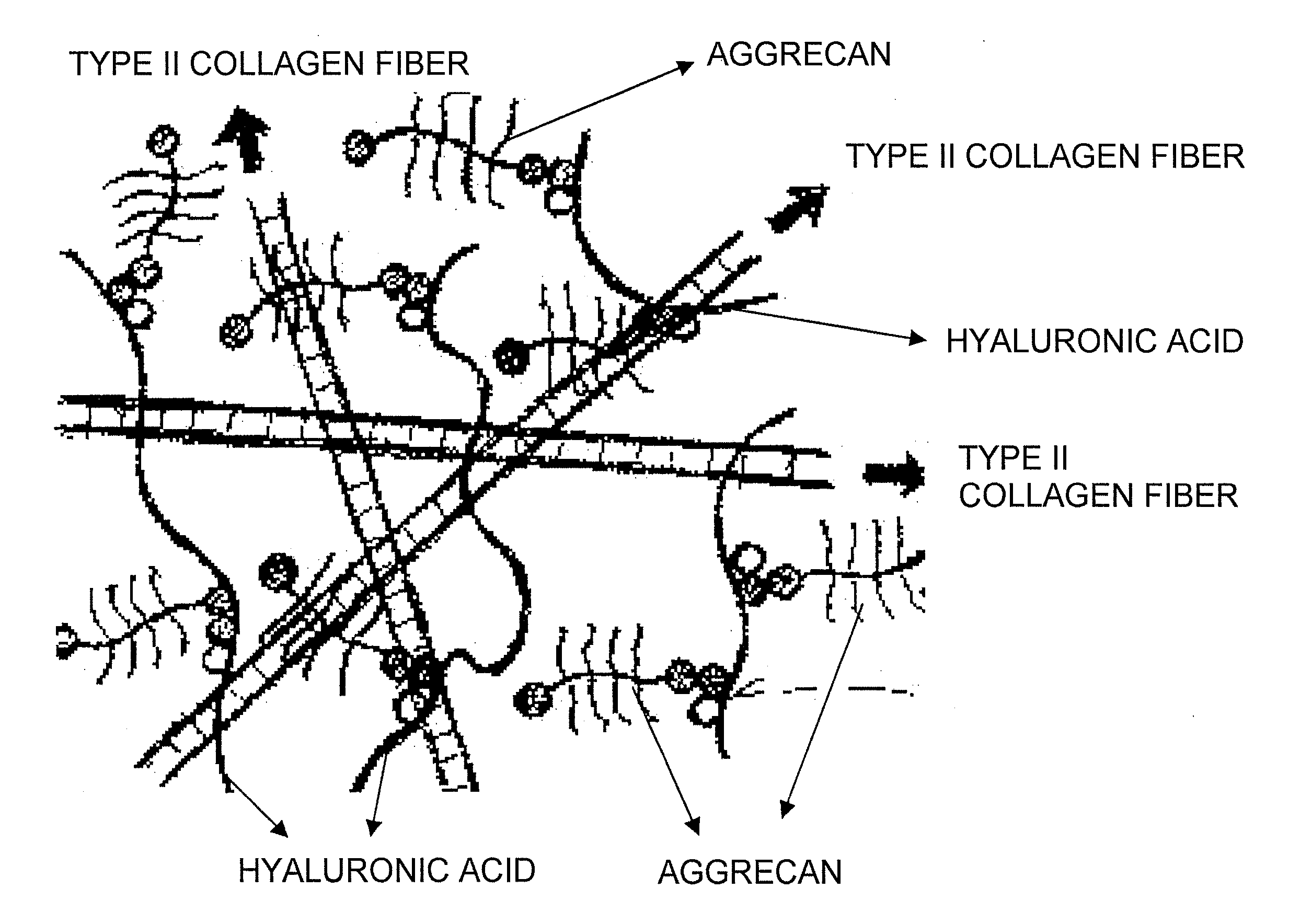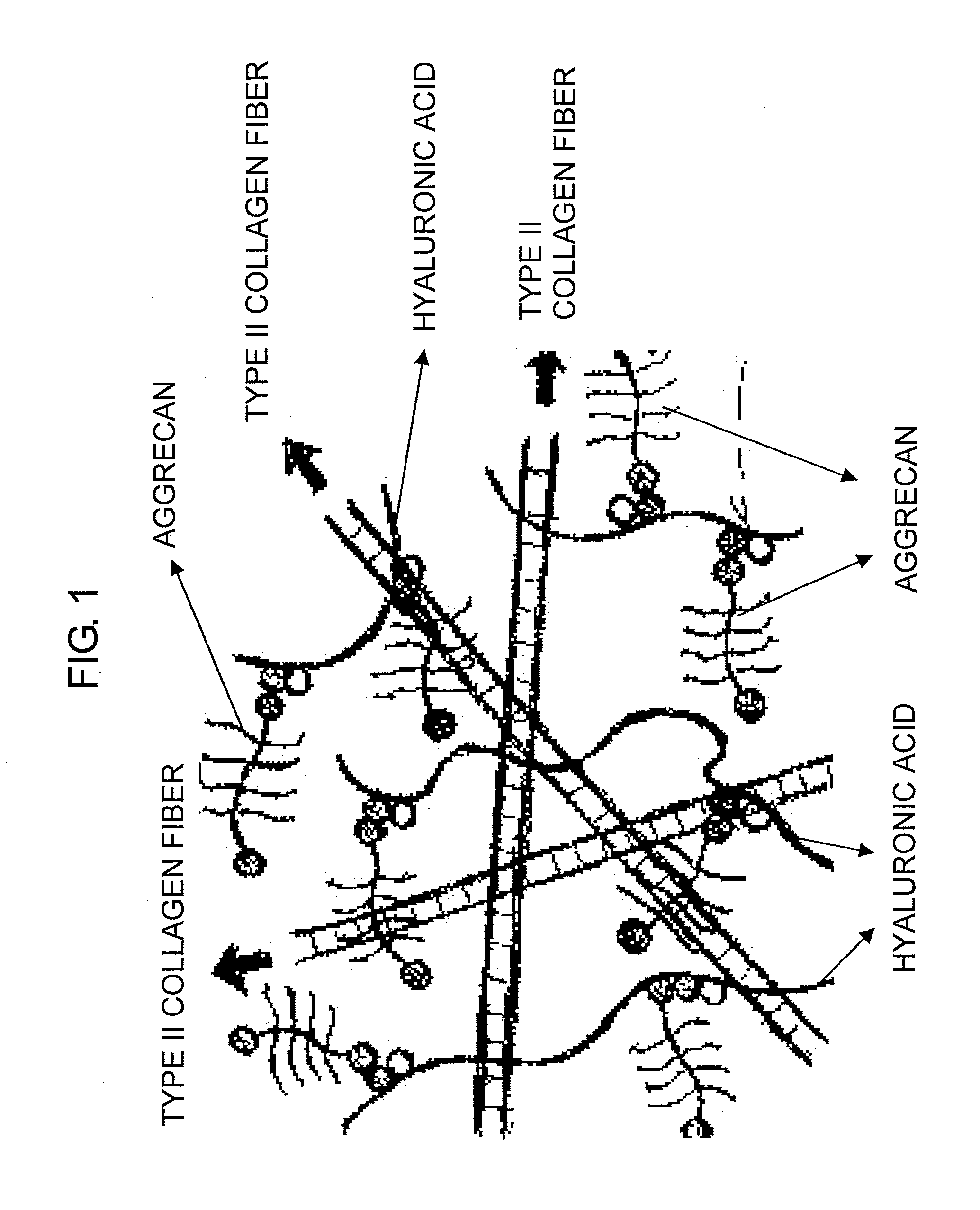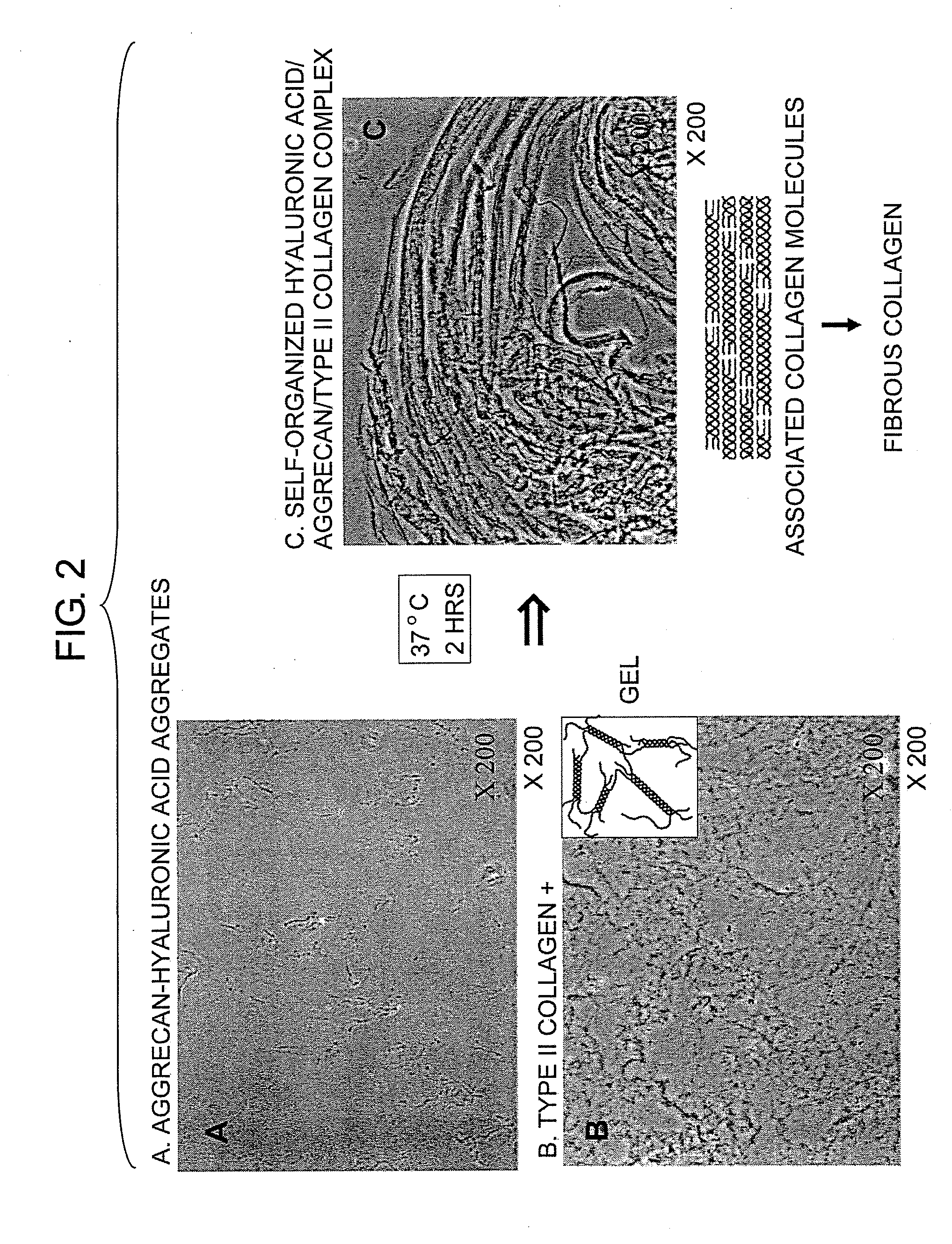Biomaterials for regenerative medicine
a biomaterial and regenerative medicine technology, applied in the field of usable biomaterials, can solve the problems of tissue damage, unsatisfactory efficacy of symptomatic treatment, cost and risk of infection, etc., and achieve the effect of suitable properties
- Summary
- Abstract
- Description
- Claims
- Application Information
AI Technical Summary
Benefits of technology
Problems solved by technology
Method used
Image
Examples
example 1
Production of Hyaluronic Acid / Aggrecan / Type II Collagen Complex
[0061]An attempt was made to produce a hyaluronic acid / aggrecan / type II collagen complex through self-organization techniques. For that purpose, the optimum conditions (concentration and pH) for hyaluronic acid, aggrecan, and collagen were examined.
[1-1] Materials and Methods
[0062]Aggrecan (hereinbelow, may be referred to as “AG”; manufactured by Sigma Co., USA) was dissolved in distilled deionized water (hereinbelow, referred to as “DDW”) as a solvent to prepare aggrecan solutions at various concentrations (the final concentration of aggrecan was 0.1, 0.25, 0.33, 0.5, or 1.0 mg / ml). Similarly, hyaluronic acid (hereinbelow, may be referred to as “HA”; manufactured by Chugai Pharmaceutical Co., Ltd., Japan; average molecular weight of 1,800,000) was dissolved in DDW to prepare hyaluronic acid solutions at various concentrations (final volume percent was 1, 2, 3, 4, or 5 volume percent). The AG solution and the HA solution...
example 2
Experiment of Cell Transfer into Self-Organized Complexes
[0072]The complex of the present invention desirably has high bioaffinity in view of its application to cartilage tissue regeneration. Specifically, it is important that an individual's chondrocytes can be engrafted when administered to a joint. Therefore, the affinity between cells and the complex of the present invention was examined by culturing chondrocytes using the complex of the present invention.
[2-1] Production of Complexes Comprising Cultured Chondrocytes
[0073]If blood serum is added to a cell culture solution for culturing chondrocytes, various factors in the blood serum would affect the formation and maintenance of the complexes and the engraftment of cells in the complexes, which may make it difficult for appropriate assessment. To avoid such effects, neutridomas were added to a serum-free medium DMEM at a final concentration of 10% to prepare a 10% neutridoma-containing DMEM solution. Rat and human chondrocytes w...
example 3
Transplantation of Self-Organized Complexes into Knee Joints of Experimental Animals
[0080]The self-organized complexes were produced using rat-derived type II collagen and aggrecan according to the method described in Example 1 above. Four 12-week-old male SD rats were anaesthetized with ether and then sterilized. Both of their knee joints were incised by aseptic techniques. The surface of articular cartilage of the medial and lateral (internal and external) condyles was pierced with an 18-gauge injection needle, to produce two articular cartilage defects per knee joint. The self-organized complexes were transplanted into one of these two articular cartilage defects (FIG. 10). The joint tissues were sutured, and the rats were grown for six weeks. In the sixth week, the mice were euthanized. The knee articular cartilage tissues were collected from them and fixed with 4% paraformaldehyde, followed by embedding in paraffin. The specimen was sliced and subjected to hematoxylin-eosin sta...
PUM
| Property | Measurement | Unit |
|---|---|---|
| Concentration | aaaaa | aaaaa |
| Concentration | aaaaa | aaaaa |
| Percent by volume | aaaaa | aaaaa |
Abstract
Description
Claims
Application Information
 Login to View More
Login to View More - R&D
- Intellectual Property
- Life Sciences
- Materials
- Tech Scout
- Unparalleled Data Quality
- Higher Quality Content
- 60% Fewer Hallucinations
Browse by: Latest US Patents, China's latest patents, Technical Efficacy Thesaurus, Application Domain, Technology Topic, Popular Technical Reports.
© 2025 PatSnap. All rights reserved.Legal|Privacy policy|Modern Slavery Act Transparency Statement|Sitemap|About US| Contact US: help@patsnap.com



